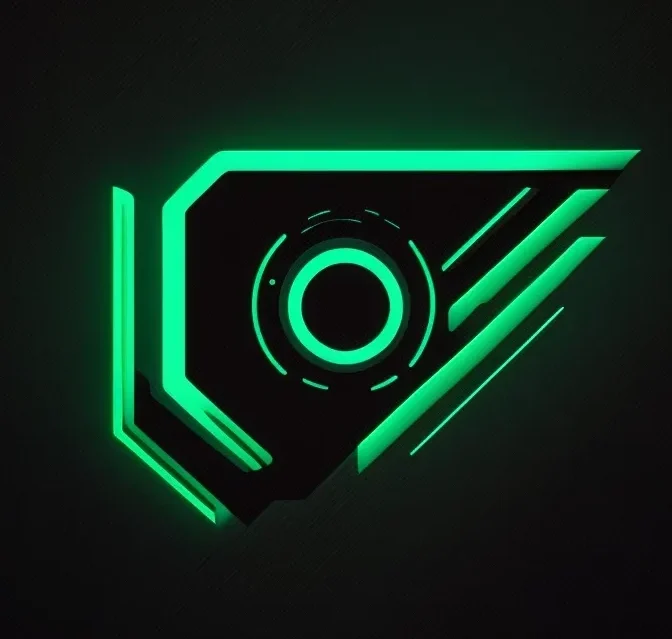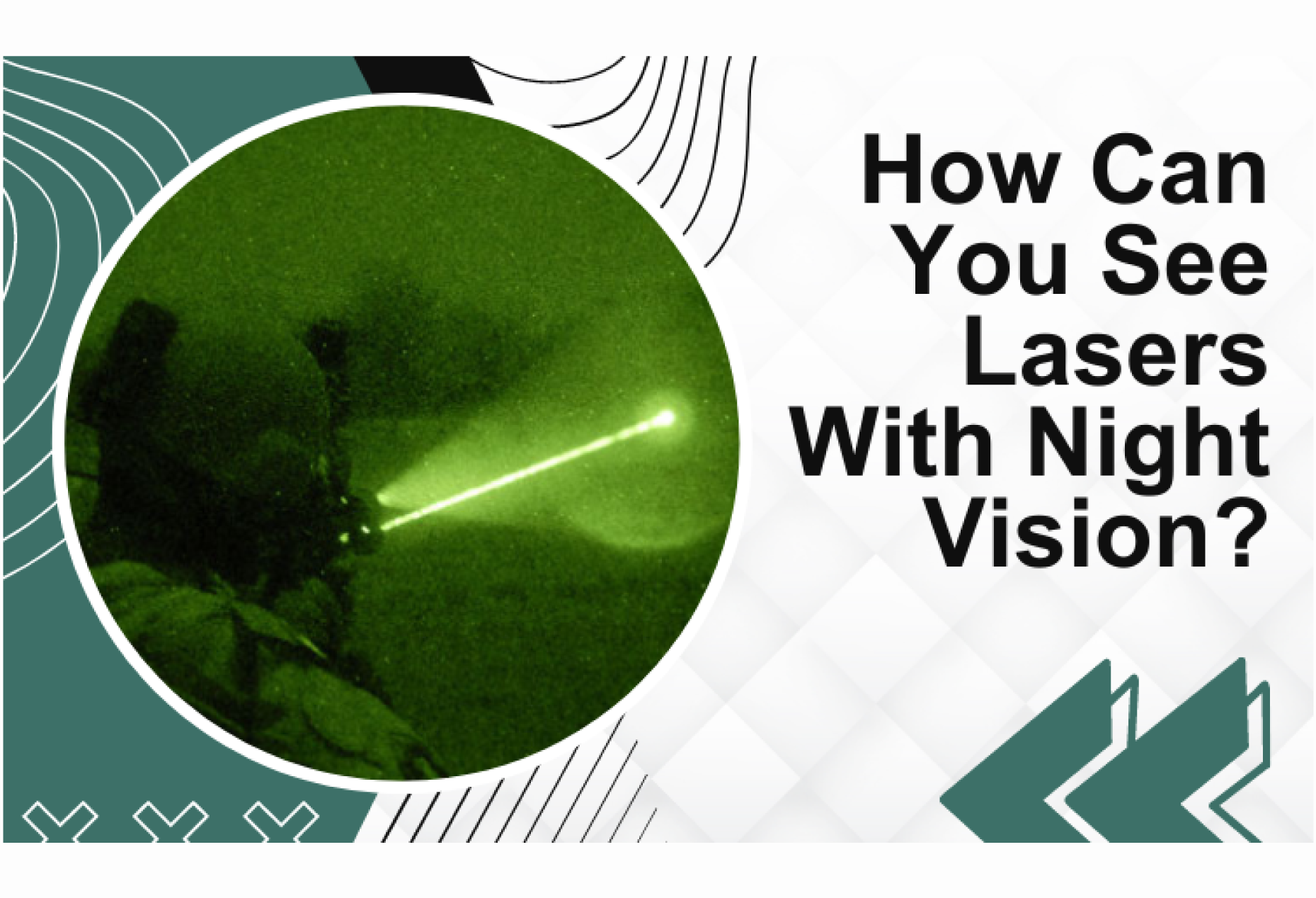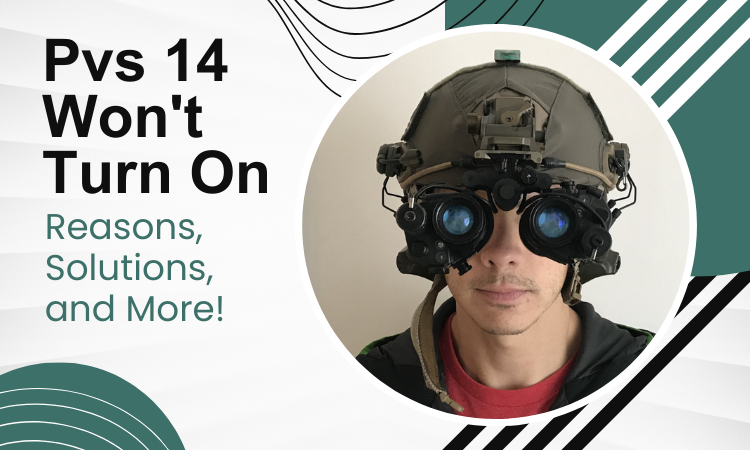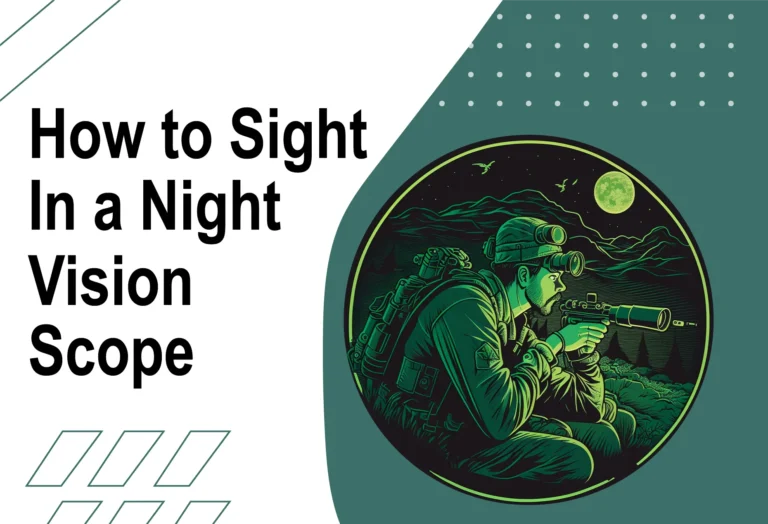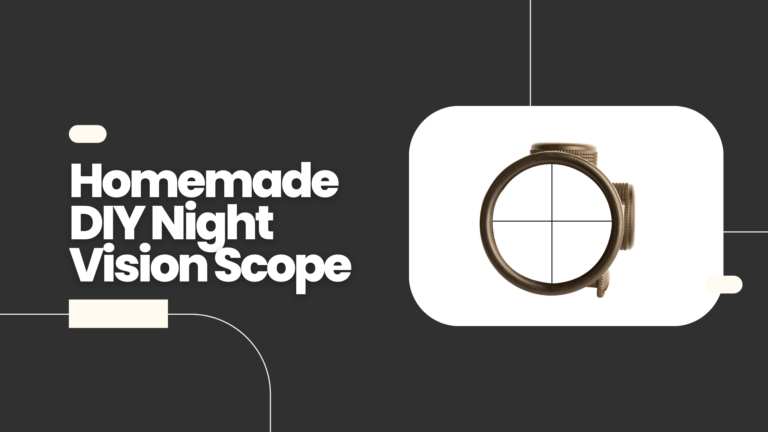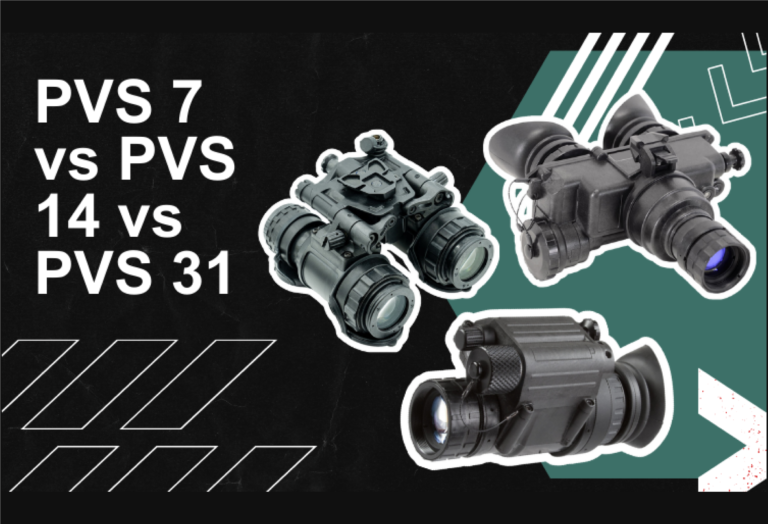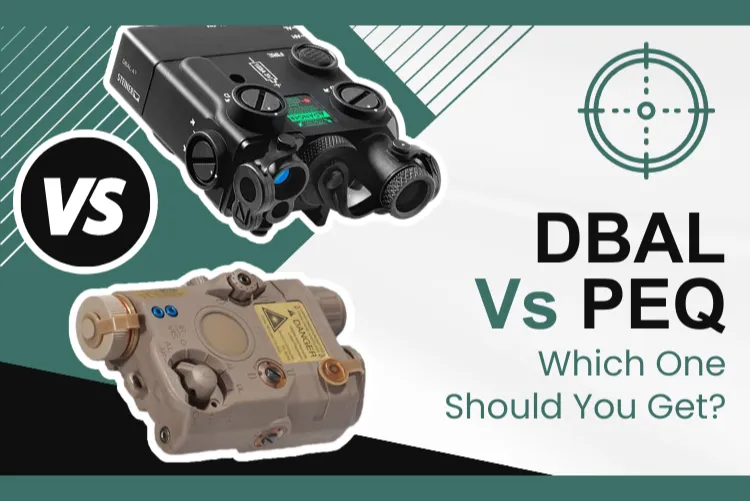Night Vision and Lasers: Can Night Vision Goggles Detect Laser Pointers?
Invisible lasers cannot be seen by the naked eye, but are they visible via night vision? What about the visible lasers, can they be seen via night visions?
So, can you see lasers with night vision?
Most night vision technology can see IR(invisible), red, and green (visible) lasers. But not all night vision technology has the same capabilities. Digital night vision cannot see IR lasers properly but can see red and green lasers.
The topic in hand has many more nuances you need to know. Fortunately, in this article, we’ve gathered everything in one place!
Can Night Vision Device Capture Lasers?
Can night vision goggles see lasers? Whether or not night vision goggles can see lasers depends on several factors. This includes the wavelength of the laser, the sensitivity of the night vision goggles, and the power of the laser.
There are specific types of night vision goggles that are designed to detect laser beams. These goggles are typically referred to as “laser detection goggles” or “laser detection devices.” Laser Detecting Night Vision Goggles (LDNVG), Laser Detection and Ranging (LIDAR) Goggles and Laser Safety Goggles are some examples.
Filmed and unfilmed night vision will have different levels of visibility for different lasers as well.
However, some lasers are powerful enough or emit light in a wavelength that can be detected by night vision goggles. For those specific lasers it is possible that the goggles could detect them. More on different lasers are discussed in the next topic.
Seeing Various Lasers with Night Vision
Different lasers have different wavelengths and interact differently with night vision. So, let’s see which laser can be seen by night vision.
Seeing IR Laser With Night Vision:
Can you see an IR laser with night vision? Yes, it is possible to see infrared (IR) lasers with certain types of night vision devices.
IR lasers emit light at a wavelength that is outside the visible spectrum. Thus, they are typically invisible to the human eye. However, most night vision devices are sensitive to IR light and can detect and amplify the signal from an IR laser.
How Does It Work:
Infrared (IR) lasers emit light at a wavelength that is outside the visible spectrum. Typically, it is in the range of 700 nanometers to 1 millimeter.
While human eyes cannot see IR light, many night vision devices are sensitive to IR light. They can detect and amplify the signal from an IR laser.
Night vision devices that can spot IR lasers use sensors or detectors to detect the scattered IR light. This scattered light can then be amplified and displayed on a screen. This allows the user to see the location and intensity of the laser.
So, can you see an IR laser with thermal? Yes. The IR laser can be seen by thermal imaging devices. They can detect the heat energy emitted by objects rather than the visible light they reflect. IR lasers produce a small amount of heat when they strike a surface, which can be detected by thermal imaging devices. This can be used to locate the position of the IR laser.
But remember, different thermal scopes will have different performances. ATN, AGM, Pulsar all have different thermal capabilities.
That being said, some types of night vision technology may not be as effective at detecting IR. For example, night vision devices that use digital sensors, such as digital cameras or smartphones. They are mostly not sensitive enough to detect IR light.
Technology to See IR with Night Vision:
The ability of a night vision device to detect IR lasers depends on the sensitivity of its sensors. It also depends on the power and wavelength of the laser. Generally, night vision devices that use image intensifier tubes (IITs) and thermal imaging technology are sensitive to IR light.
- Laser Detecting Night Vision Goggles (LDNVG): These goggles are designed to detect laser beams, including those emitted by IR lasers. They use IR sensors to detect the scattered light from the laser and can display the location and intensity of the laser on a screen.
- Image Intensifier Tubes (IITs): These are the most common type of night vision device. They are sensitive to a wide range of light wavelengths, including IR. Night vision goggles or monoculars that use IITs can typically detect IR lasers with a wavelength of 800 to 1064 nanometers.
- Thermal Imaging Devices: Some thermal imaging devices are capable of detecting IR lasers. These devices detect the heat produced by the laser, which can appear as a bright spot on the thermal image.
Seeing Green Laser With Night Vision:
Can you see a green laser with night vision? Yes, it is possible to see a green laser with night vision devices. Green laser light falls within the visible spectrum of light. This means that it can be seen by the human eye and by most night vision devices.
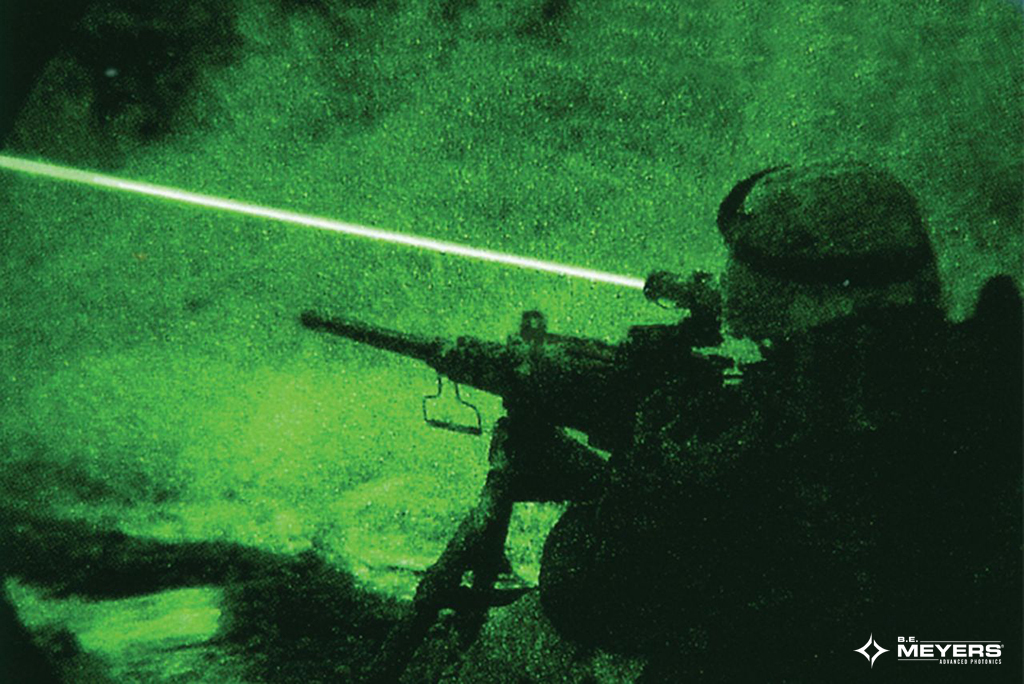
How Does it Work:
Image intensifier tubes (IITs) are the most common type of night vision device. They work by amplifying available light, including green laser light.
Image intensifier tubes (which are sensitive to visible light wavelengths) can pick up the green laser dot. They work even at longer ranges. The brightness and clarity of the green laser dot depend on the sensitivity and quality of the IIT.
In fact, night vision laser sight devices use green lasers for targeting and sighting purposes. Because they provide a clear and visible point of reference in low-light conditions.
Green lasers are also preferred over red lasers in some applications. Because they are more easily visible at longer distances and under bright daylight conditions.
Thermal imaging sensors work by detecting heat signatures, and they can also detect green lasers.
However, because thermal imaging sensors do not detect visible light, they do not produce a visible green laser dot. Instead, they detect the heat produced by the laser beam as it interacts with the target or surrounding environment.
Digital night vision devices use sensors that are similar to those found in digital cameras. They are also sensitive to visible light, including green laser light.
However, digital night vision devices do not typically have the same level of sensitivity as IITs. Hence, they may not be able to detect green lasers at the same range or in the same lighting conditions.
Note that the visibility of a green laser with night vision devices can be affected by a number of factors. This includes the power output of the laser and the ambient lighting conditions. Even the quality of the night vision device itself comes into factor.
In some cases, the green laser may not be visible at longer ranges. Or may be visible only under ideal lighting conditions.
Seeing Red Laser With Night Vision:
Can you see a red laser with night vision? Yes, it is possible to see red laser light with night vision devices. This includes the use of image intensifier tubes (IITs), thermal imaging sensors, and digital night vision devices.
How Does it Work:
Will a red laser show up on night vision? Yes, it will show up. How a red laser can be seen with night vision is very similar to how a green laser is seen. That is because both are visible lasers.
The visibility of a red laser dot can depend on various factors. Such as the power output of the laser, the sensitivity of the night vision device, and ambient lighting conditions.
Image intensifier tubes (IITs) are the most common type of night vision device that amplifies available light, including red laser light. They can detect the red laser dot at longer ranges. However, the clarity of the dot depends on the quality and sensitivity of the IIT.
Thermal imaging sensors detect heat signatures and can detect red lasers as well. However, they do not produce a visible red laser dot as they do not detect visible light. Instead, they detect the heat produced by the laser beam interacting with the target or surrounding environment.
Digital night vision devices use sensors similar to those found in digital cameras, and they are sensitive to visible light. That includes red laser light. However, they may not have the same level of sensitivity as IITs.Thus, they may not be able to detect red lasers at the same range or lighting conditions.
Red or Green Laser? Which is More Visible To Night Vision?
As previously discussed, red lasers and green lasers both fall within the visible spectrum of light. And can be seen by the human eye and most night vision devices.
Note that the argument of night vision and red light is different from comparing red and green lasers for night vision.
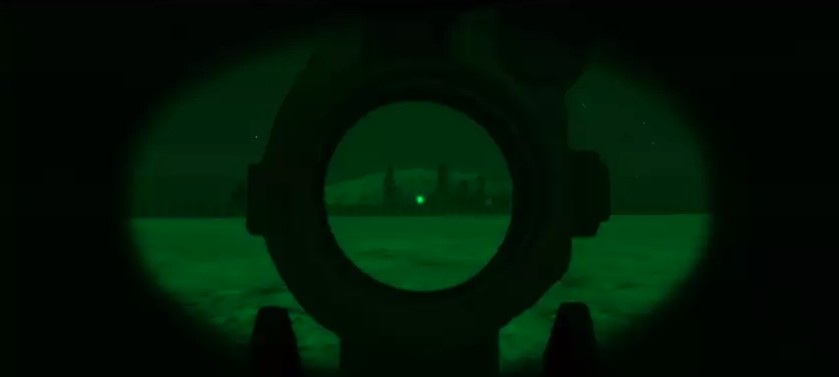
One of the main differences between green and red lasers is their wavelength. Green lasers typically have a wavelength of around 532 nm. While red lasers have a wavelength of around 635-650 nm. This difference in wavelength can affect how visible the lasers are to the human eye and night vision devices.
When it comes to night vision, both red and green lasers can be detected by various techs. This includes image intensifier tubes (IITs), thermal imaging sensors, and digital night vision devices.
However, as mentioned before, the visibility of a laser dot with night vision devices depends on a number of factors. This includes the laser’s power output, ambient lighting conditions, and the quality and sensitivity of the night vision device.
So, red or green laser for night vision? Green lasers are often preferred over red lasers. Because they are more visible to the human eye and can be detected at longer ranges.
Green lasers may be more visible to some night vision devices compared to red lasers due to their higher wavelength. However, the power output of the laser and the sensitivity of the night vision device are also important factors to consider.
Frequently Asked Questions (FAQs):
Do lasers work with night vision?
Yes, lasers can work with night vision devices. The visibility of a laser with night vision may depend on factors such as the power and wavelength of the laser, as well as the sensitivity and quality of the night vision device.
What is the difference between infrared night vision and night vision?
Infrared night vision uses thermal imaging sensors to detect heat signatures, while night vision typically uses image intensifier tubes to amplify available light in low-light conditions. IR night vision is better for detecting heat signatures. But night vision is better for detecting visible light.
Does night vision work with moonlight?
Yes, night vision can work with moonlight. Moonlight can provide enough ambient light for night vision devices to amplify, making them effective in low-light conditions. However, effectiveness depends on factors such as device quality and moon brightness.
Conclusion
That concludes our discussion on can you see lasers with night vision. Mostly, you can. But not all night vision has the capability to see lasers in the same manner. This also differs because of the different types of lasers.
